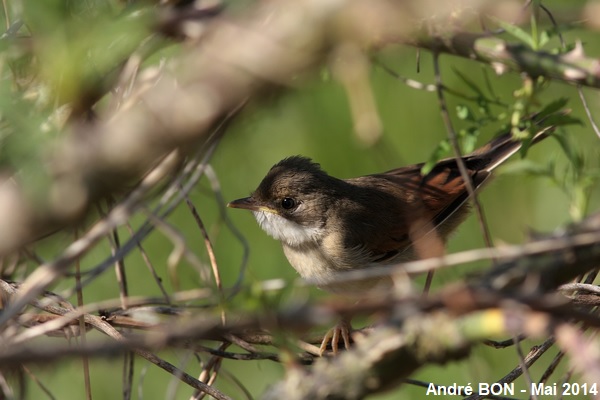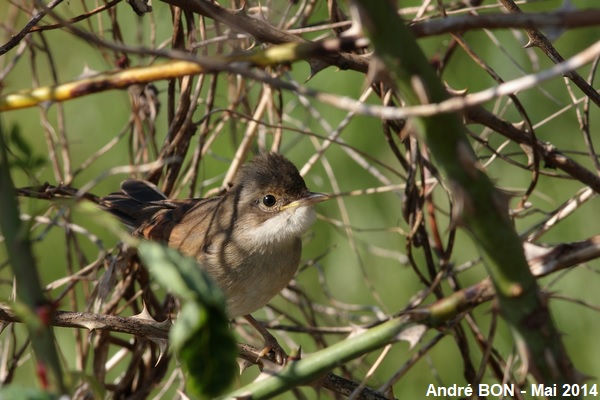


| Common Whitethroat (Sylvia communis (Latham, 1787)) |



|
|
Scientific name: Sylvia communis (Latham, 1787) Common name: Common Whitethroat Other names: Greater Whitethroat French name: Fauvette grisette Order: Passeriformes Family: Sylviidae Size: Body size: 14 cm; Wingspan: 22 cm; Weight: 12 to 18 g Habitat: Open and bushy habitats, waste lands, bocages, hedgerows, brambles. Food: Insects and arachnids, fruits in autumn. Nesting: Common Whitethroats build a small cup-shaped nest, close to the ground, inside a dense bush or bramble. There may be two clutches of 4 to 5 eggs between April and June. Migration: Common Whitethroats winter in sub-Saharan Africa. Geographic area: The Sylvia communis communis subspecies is observed in western Europe east to Ukraine, to European Russia and to northern Turkey. The Sylvia communis volgensis subspecies is observed further east to south Siberia and northern Kazakhstan. The Sylvia communis icterops subspecies is observed in Turkey, in the Caucasus and in Transcaucasia, in northern Iran east to Turkmenistan. The Sylvia communis rubicola subspecies is observed in the mountains of Central Asia. |
Male Common Whitethroats show a grey cap extending to the nape. The throat is white. The upper parts are greyish brown, the wings are reddish. The underside is a very light pinkish yellow colour. The tail is rather long. The bill is dark grey with a paler lower mandible. The eyes are circled with a pale colour. The legs are pinkish brown. Females are duller and more brown than males. |
| [To know more about the Common Whitethroat] [Next picture] [Top] |

|
A complete clutch of Common Whitethroats, parents and juveniles, flew away when I approached a small and dense bush. All … but one juvenile Common Whitethroat which seemed less confident in its take off, maybe its first one. I have been able to shoot a series of pictures before it decide to fly towards its family. |
| [To know more about the Common Whitethroat] [Next picture] [Previous picture] [Top] |

|
I may have permitted this Common Whitethroat to gain confidence in his flight and that will be useful to escape any eventual predator. |
| [To know more about the Common Whitethroat] [Previous picture] [Top] |

|
Front view. |